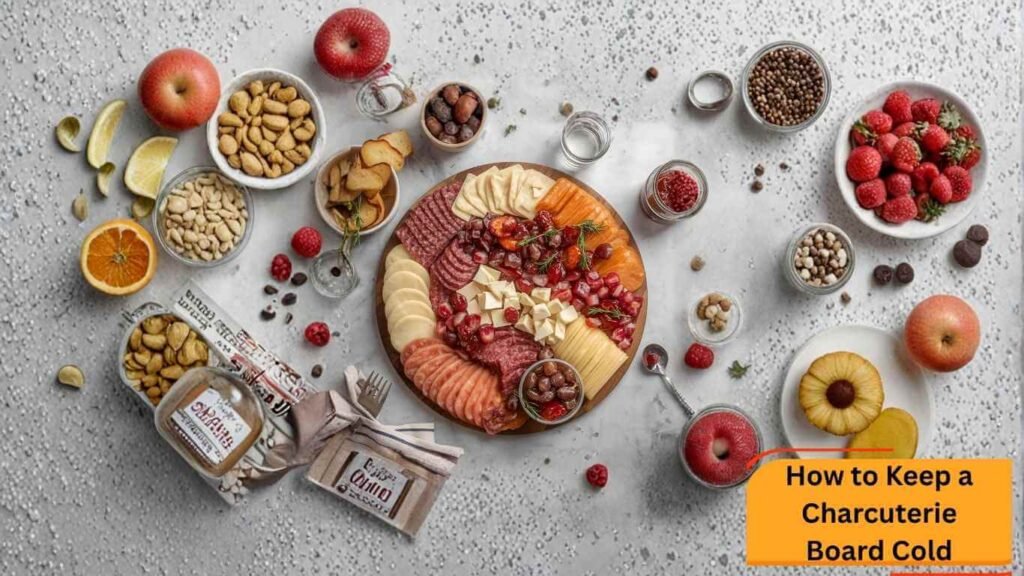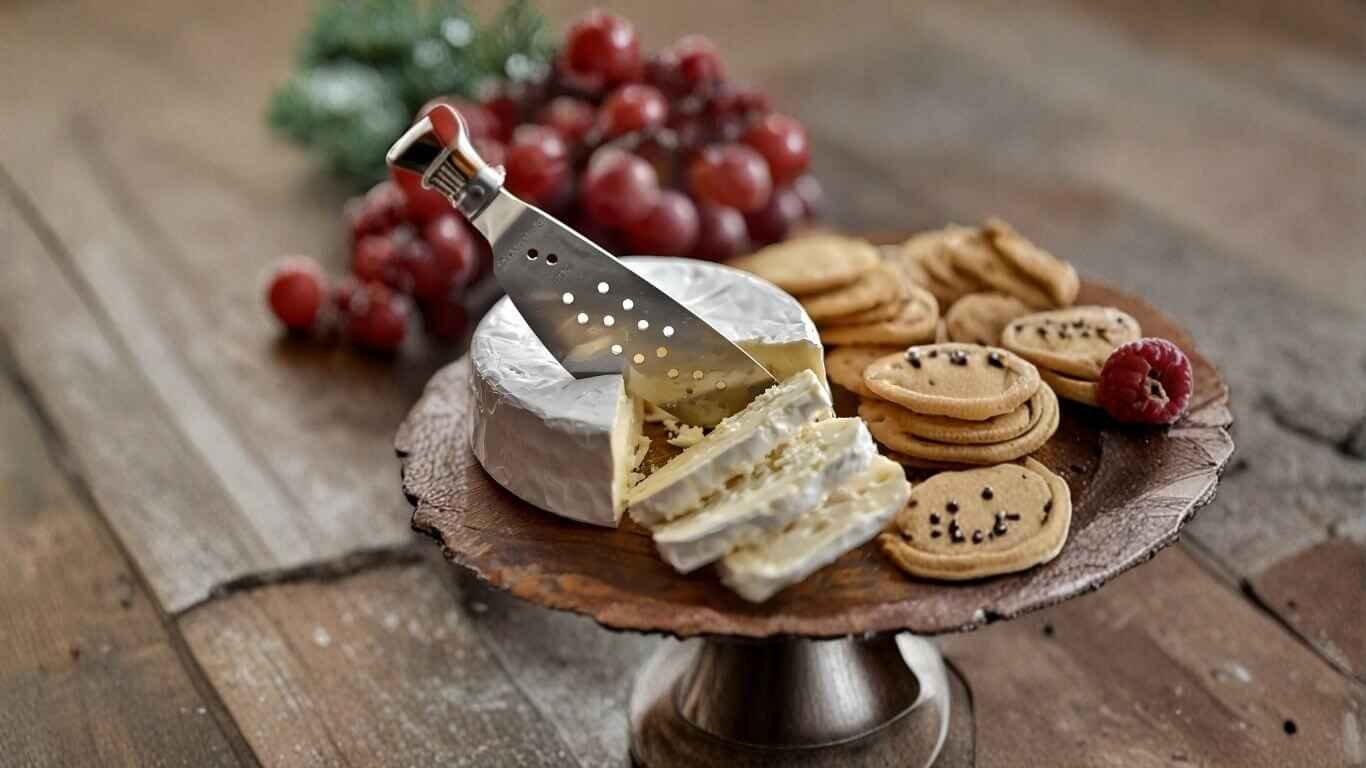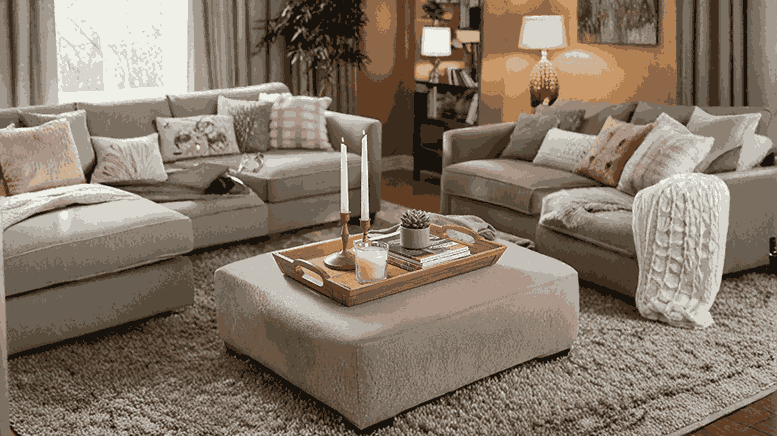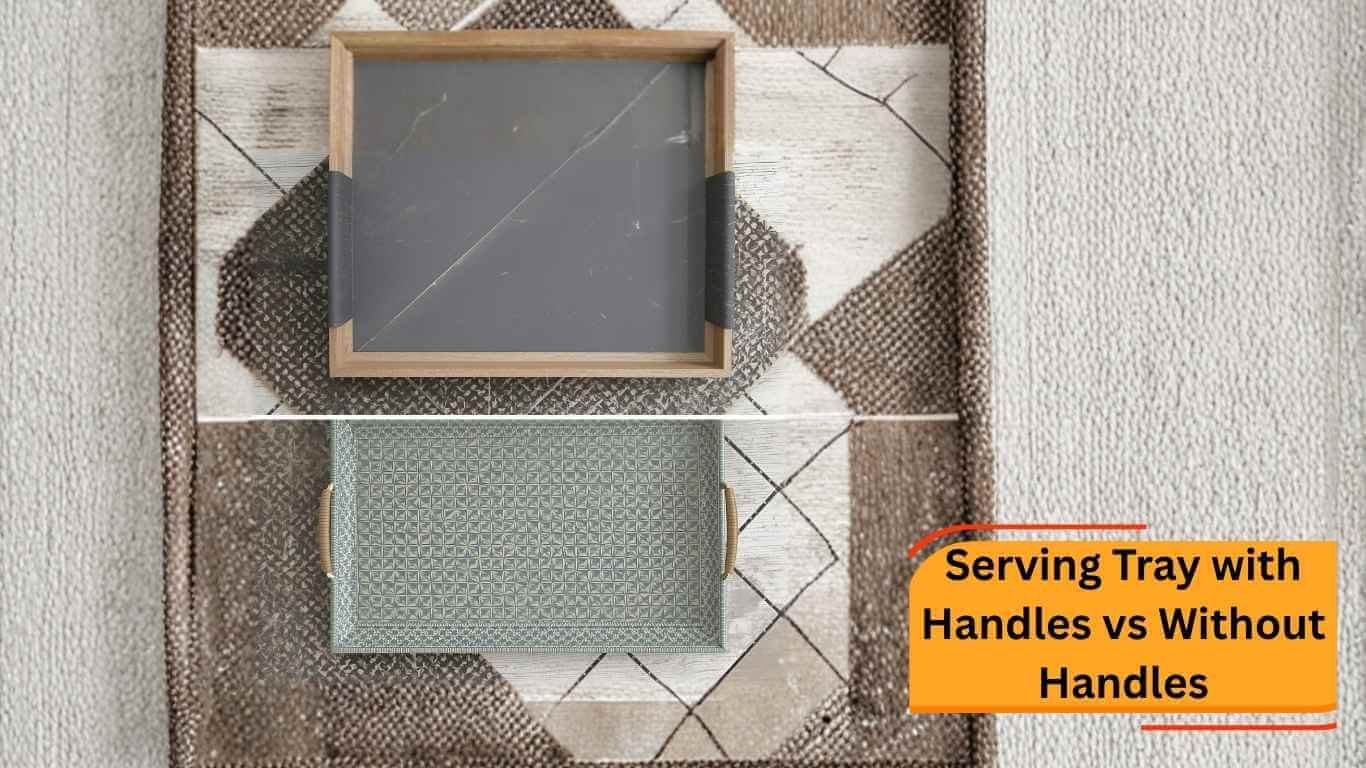A beautifully arranged charcuterie board is the heart of any gathering, offering a visual feast of colors, textures, and flavors. But as guests mingle and time passes, a hidden challenge emerges, especially in warm rooms or at outdoor events. How do you keep those delicate meats, cheeses, and fresh accompaniments from turning into a sad, sweaty, and potentially unsafe mess?
Maintaining the right temperature is crucial not just for taste and appearance but for food safety. This guide provides everything you need to know about serving fresh, safe, and stunning charcuterie. We will cover proven methods, useful products, professional tips, and answer common questions to ensure your spread remains as impressive as when you first set it down.
Why Charcuterie Boards Need to Stay Cold
Understanding the “why” behind chilling is the first step toward flawless presentation. The need for a cold charcuterie board comes down to two critical factors: food safety and quality.
Perishable Foods and Food Safety
Charcuterie boards are loaded with perishable ingredients. Cured meats, soft and hard cheeses, creamy dips, and fresh fruits are all sensitive to temperature changes. When these foods sit in the “danger zone” between 40°F and 140°F (4°C and 60°C) bacteria can multiply rapidly.
This poses a significant risk for foodborne illness. As a general rule, perishable foods should not be left at room temperature for more than two hours. If you are outdoors and the temperature is above 90°F (32°C), that safe window shrinks to just one hour. Keeping your charcuterie cold display below 40°F (4°C) is the best way to prevent spoilage and protect your guests.
Quality and Appearance
Beyond safety, temperature dramatically affects the quality of your ingredients. Heat causes the fats in cheese and meats to “sweat,” leading to a greasy film and an oily taste. Soft cheeses can become runny, while cured meats may develop a tough or slimy texture.
Fresh components like fruits and vegetables lose their crispness and vibrant color, becoming wilted and unappealing. The aromas can also change, with delicate flavors becoming overpowering or spoiling entirely. A chilled board preserves the intended texture, flavor, and visual appeal that make charcuterie so special.
Preparation Prepping Ingredients & Boards for Chilling
A successful cold display starts long before the first guest arrives. Proper preparation is key to extending the life of your board.
Pre-Chill All Ingredients
Your first line of defense is a cold start. Keep all your meats, cheeses, fruits, vegetables, and dips in the refrigerator until the moment you begin assembling the board. This ensures every component starts at a safe, food-friendly temperature.
You can even do some prep work ahead of time. Slice hard cheeses, fold or roll meats into rosettes, and wash your fruits. Store these prepped items in airtight containers in the fridge. This not only saves you time during assembly but also guarantees everything is thoroughly chilled.
Use Chilled Boards and Servingware
The surface your food sits on matters. Certain materials hold cold temperatures longer than others. Marble, granite, slate, and stainless steel are excellent choices for charcuterie boards because you can chill them before use. Place your board in the refrigerator for at least 30 minutes or even in the freezer for about 15 minutes before arranging your food on it.
Don’t stop at the board. Chill your serving utensils, small bowls for dips, and any ramekins you plan to use. Every cold element you introduce helps create a micro-climate that prolongs the chill time of your entire spread.
Methods to Keep a Charcuterie Board Cold
Once your board is prepped and assembled, you need a strategy to maintain its temperature throughout your event. Here are several effective methods for a perfect charcuterie cold display.
FlexiFreeze Party Mats & Ice-Serving Trays
For a seamless look, consider placing frozen mats under your board. Products like FlexiFreeze mats are filled with water and can be frozen flat, providing a solid base of cold. Place one underneath your serving tray to radiate coolness upwards. To prevent condensation from making the board slippery, put a thin, dry cloth between the mat and the tray.
Another great option is a dedicated ice-serving tray. These are often designed with a lower compartment for ice and an upper, ventilated tray for food. Some models come with a roll-top cover, which helps insulate the food and protect it from outdoor elements like bugs.
Inflatable Food Coolers & Ice Buffets
If you’re hosting an outdoor event like a picnic or barbecue, an inflatable buffet cooler is a game-changer. These vinyl trays can be inflated and filled with ice, creating a large, chilled surface. You can then nestle your charcuterie board directly onto the ice.
To prevent your wooden or porous board from getting waterlogged, place a protective barrier like a plastic tray or a layer of aluminum foil underneath it. These coolers are lightweight, portable, and ideal for keeping food cold on a grazing table.
Portable/Insulated Carrying Solutions
Transporting your board to a potluck or catering an event requires a portable solution. An insulated cooler with ice packs is the most reliable method. Assemble your board on a tray that fits inside the cooler, then surround it with frozen gel packs.
For smaller boards, insulated carrier bags with a zippered top work well. They are designed to maintain temperature for several hours, ensuring your creation arrives fresh and ready to serve. Look for bags with a waterproof lining to manage any condensation.
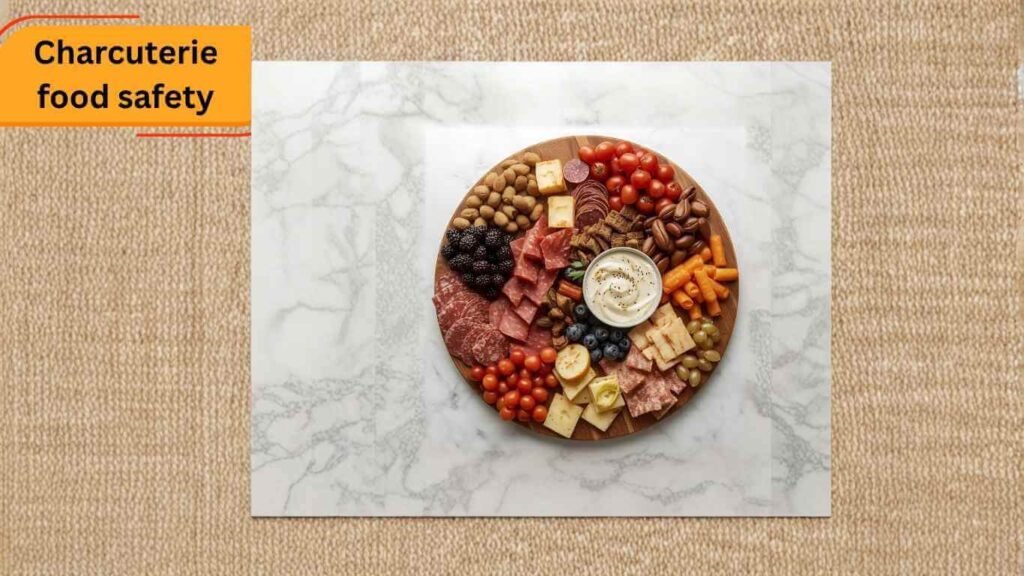
Display and Food Safety Tips for Events
Proper display and handling during your event are just as important as the initial setup. Follow these tips to keep your board safe and appetizing from start to finish.
Portion Sizes & Rotation
Instead of putting out a massive board at the beginning of a long event, opt for smaller, rotating displays. Prepare two or three smaller boards and keep them in the refrigerator. As the first board begins to warm up or get depleted (typically after about an hour), swap it out for a fresh, chilled one.
This strategy is especially effective for outdoor events. At a summer wedding or shower, aim to refresh your grazing table every 30 to 60 minutes to ensure everything remains at a safe temperature.
Monitor & Maintain Temperature
Take the guesswork out of food safety. Use a food-safe thermometer to periodically check the temperature of your meats and cheeses. If you notice the temperature creeping above 40°F (4°C), it’s time to either replenish the ice or swap the board.
Strategic placement also helps. Keep the charcuterie board in a shaded area, away from direct sunlight. Indoors, avoid placing it near heat sources like radiators, ovens, or sunny windows.
Labeling and Utensil Hygiene
Clear communication and good hygiene are part of a professional display. Label different cheeses and meats so guests know what they are eating. This is especially important for anyone with allergies or dietary restrictions.
Provide separate serving utensils for each section of the board one for meats, one for cheeses, another for dips, and so on. This simple step prevents cross-contamination and keeps flavors from mingling, ensuring every bite tastes as it should.
Advanced Solutions – DIY and Commercial Options
Ready to take your charcuterie game to the next level? These advanced solutions combine creativity and technology for the ultimate chilled display.
DIY Chilling Tips
You can incorporate cooling elements directly into your board’s design. Freeze grapes or berries and scatter them across the board; as they thaw, they help chill the items around them. You can also freeze thin slices of citrus or even edible flowers in ice cubes to add a stylish and functional cooling touch.
Another trick is to line your serving tray with thin, reusable ice packs before adding a layer of parchment paper. Arrange your food on top of the paper. The ice packs will remain hidden while providing a consistent source of cold from below.
Commercial Cooling Gear
Investing in commercial-grade gear can make all the difference for frequent hosts.
- FlexiFreeze Mats: These are praised for their flexibility and even cooling, but they can sweat as they thaw, requiring a barrier.
- Roll-Top Ice Trays: These offer excellent protection and insulation. Their main drawback can be size and storage when not in use.
- Inflatable Buffet Coolers: Highly portable and great for large crowds, their only con is the need to manage melting ice and potential water contact with the board.
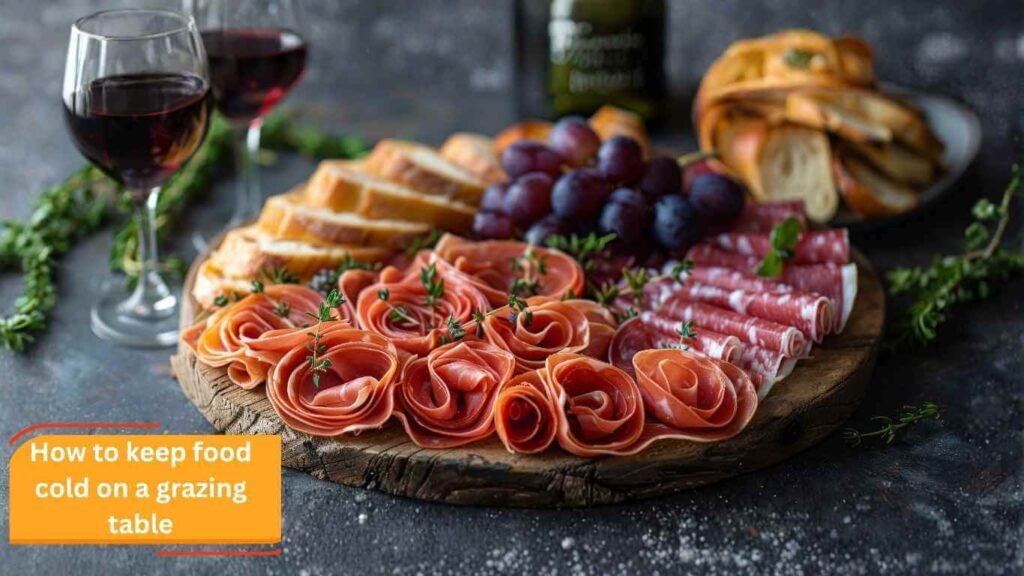
Frequently Asked Questions
How long can a charcuterie board safely sit out?
Indoors at room temperature (under 90°F), a charcuterie board can sit out for up to two hours. Outdoors, or in warmer conditions, this window shrinks to one hour.
Can you pre-assemble a board and refrigerate it?
Yes! You can assemble your board, wrap it tightly in plastic wrap, and refrigerate it for up to 24 hours. However, wait to add crackers, bread, or nuts until just before serving to prevent them from becoming soggy.
What board materials keep food cold longest?
Marble, slate, granite, and ceramic are the best materials for keeping food cold because they retain temperature well after being chilled. Wood is more of an insulator and won’t hold the cold as long.
Are there any foods that shouldn’t be kept super cold?
Some hard cheeses, like aged cheddar or Parmesan, have a better flavor and texture when served closer to room temperature. You can place these on the board just before serving, away from the coldest spots.
Any tips for chilling at outdoor weddings, showers, or picnics?
For large outdoor events, use an ice buffet or inflatable cooler as your base. Use multiple smaller boards and rotate them every 30-60 minutes. Provide a tent or umbrella for shade, and use covered serving trays to protect the food.
Conclusion
Keeping a charcuterie board cold is a simple blend of science and art. It ensures your food is safe to eat while preserving the delicious flavors, textures, and visual appeal you worked so hard to create. By pre-chilling your ingredients, choosing the right servingware, and using smart display strategies, you can serve your creations with confidence.
Whether you use DIY chilling hacks or invest in commercial cooling gear, these efforts show your guests you care about their experience and well-being. With these tips, you can focus on what matters most: enjoying good food and great company, worry-free.
